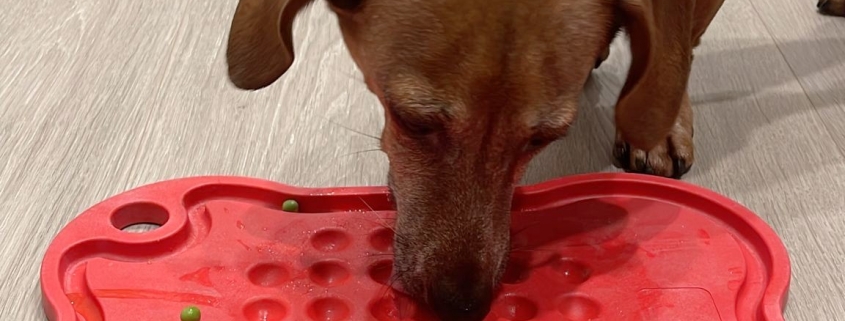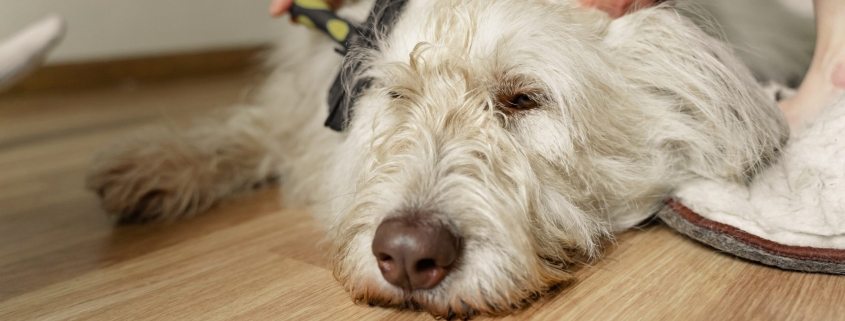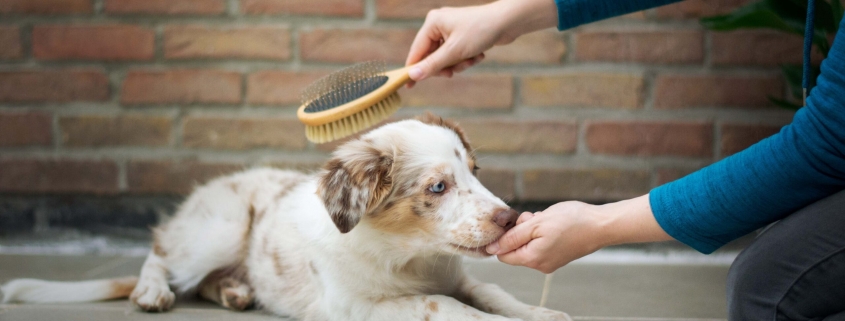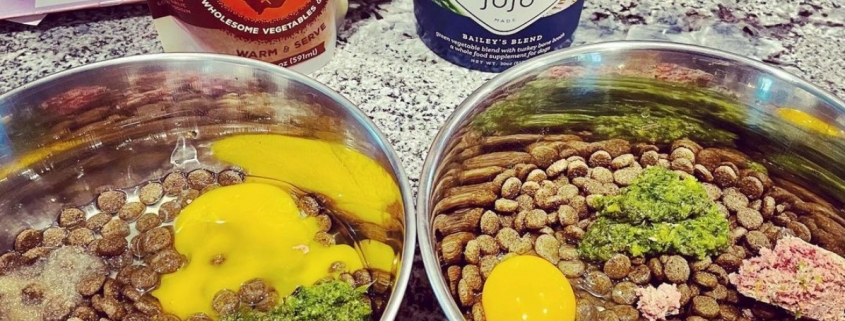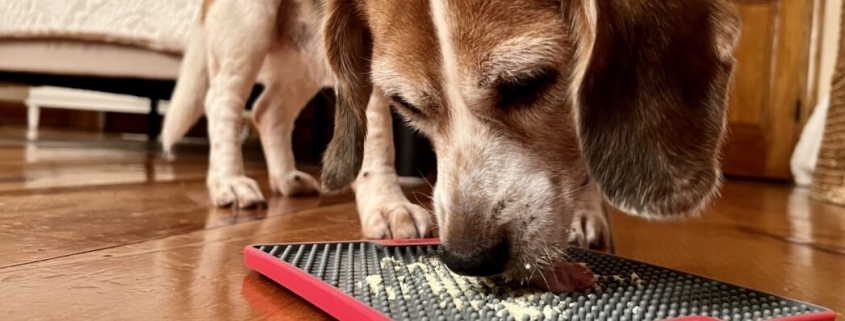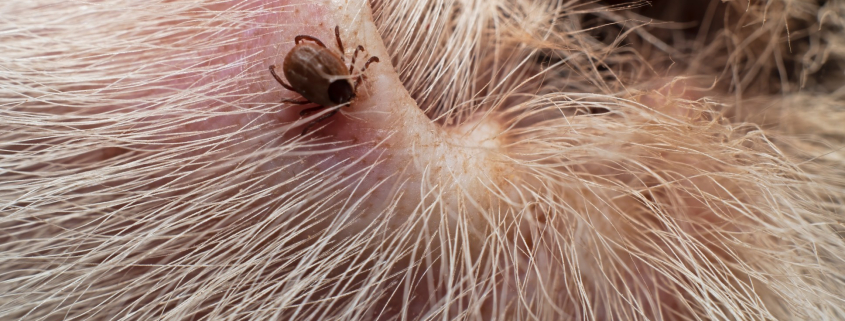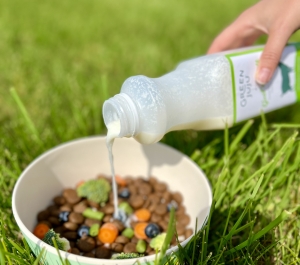Is Your Pet’s Healthy Food Being Served in a Toxic Bowl?
Pet Parents are spending a great deal of time and money to ensure they are serving the healthiest foods to their pets. However, when it comes time to select a bowl or feeder, most Pet Parents report that they choose the cheapest bowl or one that matches the décor of their home. However, did you ever consider if your pet’s food bowl is actually safe? Have you checked to see where your food bowl was manufactured or what materials it is made of? Can you trust the labels on the package that sometimes provide this information? Think about it…these food bowls are in constant contact with your dog’s mouth and tongue multiple times each day.
Let’s start out with the country where your pet’s food bowl is being manufactured. Why should this matter? Because you want to be sure that it is in a country that follows “GMP” or Good Manufacturing Processes. The most important assurance of GMP is to provide quality control and safety. Simply put, the manufacturing people are properly trained; working in a properly cared for facility; following a standardized process; producing consistent products, and guided by procedures that guarantee quality and safety. Pet products made in the United States are most likely to be manufactured within these guidelines whereas those manufactured in China are least likely. Pet Parents should especially be concerned about pet bowls, feeders, and lick mats made in China because there are no guarantees that the materials or manufacturing process are safe and free of harmful toxins. Of course, it is more expensive to manufacture under GMP because of the additional time and cost involved in the manufacturing process.
So, the next time you are purchasing a pet food bowl or feeder, invest the same time and money you would in choosing their food. It is the one item in the household that your pet interacts with multiple times each day. And now you can rest assured that you are truly serving them a safe and healthy meal.About the Author: Carol Smeja, Ph.D
Carol Smeja’s career has focused in the area of psychology and sociology which led to her earning a Ph.D. She applied these roots in understanding the psychological and social dynamics of eating while working in marketing/research with the U.S. and global food companies and improving health & diet with U.S. government agencies. More recently, she has applied her extensive research and diagnostic training in understanding the eating behaviors of our dogs & cats by studying the natural and instinctive behaviors of their ancestral roots. She has conducted comprehensive ancestral reviews and integrated information from wildlife specialists and professional research/observational programs. She volunteers at zoos to continue to gain knowledge on our pet’s dietary needs and feeding habits in addition to improving conservation efforts. Lecturing at both professional events and pet organizations, Carol seeks to educate Pet Parents on the importance of how you feed your pet to improve their health & wellbeing. She is also the co-creator of the Original Mine Pet Platter. Made with an innovative and sustainable material naturally sourced from plant life that is safe and non-toxic. 100% designed, sourced, and manufactured in the USA, the mine Pet Platter is food and dishwasher-safe, BPA-free, eco-friendly and recyclable. The Mine Pet Platter is safe for pets and the planet.
So, the next time you are purchasing a pet food bowl or feeder, invest the same time and money you would in choosing their food. It is the one item in the household that your pet interacts with multiple times each day. And now you can rest assured that you are truly serving them a safe and healthy meal.
About the Author: Carol Smeja, Ph.D
Carol Smeja’s career has focused in the area of psychology and sociology which led to her earning a Ph.D. She applied these roots in understanding the psychological and social dynamics of eating while working in marketing/research with the U.S. and global food companies and improving health & diet with U.S. government agencies. More recently, she has applied her extensive research and diagnostic training in understanding the eating behaviors of our dogs & cats by studying the natural and instinctive behaviors of their ancestral roots. She has conducted comprehensive ancestral reviews and integrated information from wildlife specialists and professional research/observational programs. She volunteers at zoos to continue to gain knowledge on our pet’s dietary needs and feeding habits in addition to improving conservation efforts. Lecturing at both professional events and pet organizations, Carol seeks to educate Pet Parents on the importance of how you feed your pet to improve their health & wellbeing. She is also the co-creator of the Original Mine Pet Platter. Made with an innovative and sustainable material naturally sourced from plant life that is safe and non-toxic. 100% designed, sourced, and manufactured in the USA, the mine Pet Platter is food and dishwasher-safe, BPA-free, eco-friendly and recyclable. The Mine Pet Platter is safe for pets and the planet.
The reason we should care about the food bowl we choose for our pets is the dramatic incident of cancer. I want to be forthright in saying there is no mandatory reporting to a universal database that allows the scientific tracking of this disease. However, the Animal Cancer Foundation has recently provided estimates that roughly 6 million new cancer diagnoses are made in both dogs and cats each year in the United States (out of a 65 million dog and 32 million cat population).
Always check labels and ask questions
What can Pet Parents do to check on the quality and safety of their pet’s feeding devices? First, check the label to see the country where it is made, where the material was sourced and the type of material used. Beware of products that do not state where it is manufactured as well as those that say ‘globally sourced materials’—there is no way to ascertain if it is a safe or reliable feeder. Also, if it says, “Designed and tested in the U.S.”, dig deeper to find out where it was manufactured and where the materials were sourced—this statement has nothing to do with the quality or safety of the feeder. Also, as a last resort, contact the manufacturer and ask them to provide this information! You have the right as a Pet Parent to work around the ‘disinformation’ to ensure the health and wellbeing of your pet.
So, the next time you are purchasing a pet food bowl or feeder, invest the same time and money you would in choosing their food. It is the one item in the household that your pet interacts with multiple times each day. And now you can rest assured that you are truly serving them a safe and healthy meal.
About the Author: Carol Smeja, Ph.D
Carol Smeja’s career has focused in the area of psychology and sociology which led to her earning a Ph.D. She applied these roots in understanding the psychological and social dynamics of eating while working in marketing/research with the U.S. and global food companies and improving health & diet with U.S. government agencies. More recently, she has applied her extensive research and diagnostic training in understanding the eating behaviors of our dogs & cats by studying the natural and instinctive behaviors of their ancestral roots. She has conducted comprehensive ancestral reviews and integrated information from wildlife specialists and professional research/observational programs. She volunteers at zoos to continue to gain knowledge on our pet’s dietary needs and feeding habits in addition to improving conservation efforts. Lecturing at both professional events and pet organizations, Carol seeks to educate Pet Parents on the importance of how you feed your pet to improve their health & wellbeing. She is also the co-creator of the Original Mine Pet Platter. Made with an innovative and sustainable material naturally sourced from plant life that is safe and non-toxic. 100% designed, sourced, and manufactured in the USA, the mine Pet Platter is food and dishwasher-safe, BPA-free, eco-friendly and recyclable. The Mine Pet Platter is safe for pets and the planet.
It is worth noting that just because a food bowl is manufactured in the U.S., it doesn’t mean that the materials were also sourced in the U.S. The cost of quality materials can compel manufacturers to find cheaper materials sourced from other countries and have them imported. So, you have to look at both where your pet’s food bowl is manufactured as well as where the material is sourced from.
Petfood Bowl Materials and Factors to Consider
The next factor to consider is the material of your pet’s food bowl. Typically, pet food bowls and feeders are made of either stainless steel, plastic or silicone but not all of these materials are created equal. Let’s consider each of them:
- Most Pet Parents automatically think that stainless steel food bowls are a ‘safe choice’ because they associate it with medical tools used in the health and dental fields. However, these are not the sterilized tools used in the biomedical field which mandates a different manufacturing process. Instead, all stainless steel requires the use of ‘cutting fluids’ which shape metal and are extremely difficult to get off of the surface. Cutting fluids are highly toxic and continue to leach out over time. There is a variety of cutting fluids and their safety is probably dependent on where the food bowl is made. In order to reduce the chance of leaching, caustic cleaners and high temperatures (repeated dishwashing) must be used.
- Most Pet Parents are confused about how to think of plastics. The single most important factor to consider is whether the plastic is recycled or not. Recycled plastics are extremely problematic because of raw material contamination. Recycled plastics can come from either used consumer products or used industrial products. Post-consumer recyclates are improperly cleaned and can cause cross-contamination. (China was previously the biggest importer of plastic waste which created landfills and destroyed communities making them uninhabitable.) Likewise, some post-industrial recyclates can contain industrial chemicals and cleaners which can be carcinogenic. Unfortunately, except for some industrial recyclates, there is no way to trace their source to assess their toxic composition. As such, many of these recycled plastics represent potentially serious health hazards to your pet.
- Silicone is a relatively new but popular material because it can easily be made into any shape and is fairly durable. However, because it is a more expensive material, many silicone products contain chemical fillers to reduce material costs—especially those made it China. These unknown chemical fillers could cause adverse side effects on your pet’s health. Additionally, silicone products cannot be recycled and end up in landfills because they are in their final form—not particularly friendly to the wellbeing of our planet. Finally, since silicone is a young material, there are few studies on the safety and long term health effects especially with daily use and contact with the material. Use care and caution in assessing the quality of your silicone feeders.
Why should we care?
The reason we should care about the food bowl we choose for our pets is the dramatic incident of cancer. I want to be forthright in saying there is no mandatory reporting to a universal database that allows the scientific tracking of this disease. However, the Animal Cancer Foundation has recently provided estimates that roughly 6 million new cancer diagnoses are made in both dogs and cats each year in the United States (out of a 65 million dog and 32 million cat population).
Always check labels and ask questions
What can Pet Parents do to check on the quality and safety of their pet’s feeding devices? First, check the label to see the country where it is made, where the material was sourced and the type of material used. Beware of products that do not state where it is manufactured as well as those that say ‘globally sourced materials’—there is no way to ascertain if it is a safe or reliable feeder. Also, if it says, “Designed and tested in the U.S.”, dig deeper to find out where it was manufactured and where the materials were sourced—this statement has nothing to do with the quality or safety of the feeder. Also, as a last resort, contact the manufacturer and ask them to provide this information! You have the right as a Pet Parent to work around the ‘disinformation’ to ensure the health and wellbeing of your pet.
So, the next time you are purchasing a pet food bowl or feeder, invest the same time and money you would in choosing their food. It is the one item in the household that your pet interacts with multiple times each day. And now you can rest assured that you are truly serving them a safe and healthy meal.
About the Author: Carol Smeja, Ph.D
Carol Smeja’s career has focused in the area of psychology and sociology which led to her earning a Ph.D. She applied these roots in understanding the psychological and social dynamics of eating while working in marketing/research with the U.S. and global food companies and improving health & diet with U.S. government agencies. More recently, she has applied her extensive research and diagnostic training in understanding the eating behaviors of our dogs & cats by studying the natural and instinctive behaviors of their ancestral roots. She has conducted comprehensive ancestral reviews and integrated information from wildlife specialists and professional research/observational programs. She volunteers at zoos to continue to gain knowledge on our pet’s dietary needs and feeding habits in addition to improving conservation efforts. Lecturing at both professional events and pet organizations, Carol seeks to educate Pet Parents on the importance of how you feed your pet to improve their health & wellbeing. She is also the co-creator of the Original Mine Pet Platter. Made with an innovative and sustainable material naturally sourced from plant life that is safe and non-toxic. 100% designed, sourced, and manufactured in the USA, the mine Pet Platter is food and dishwasher-safe, BPA-free, eco-friendly and recyclable. The Mine Pet Platter is safe for pets and the planet.

